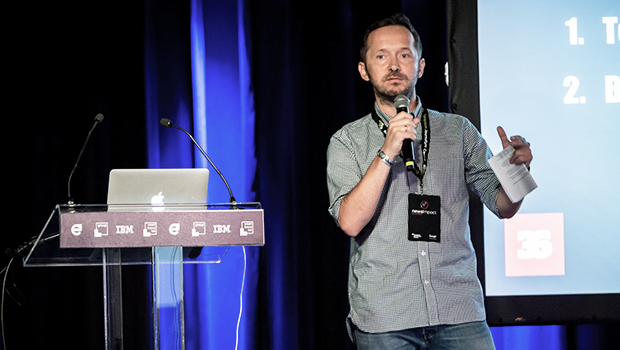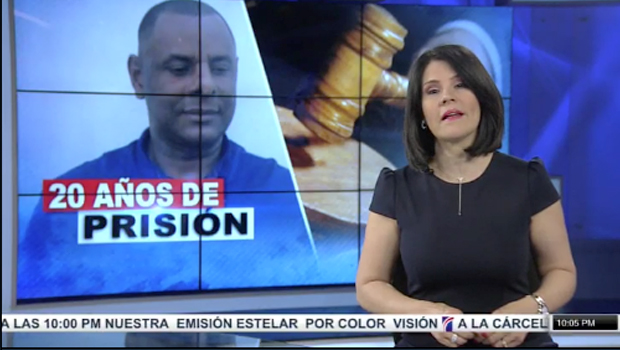A couple of weeks before Hungary’s recent, fateful national election last month, one of the nation’s leading public intellectuals, Miklós Haraszti, had a message for an audience of journalists and their supporters: “The media are the ultimate frontiers in defending freedom in society.”
As if to prove Haraszti’s point, days after the election, the largest opposition paper, Magyar Nemzet, abruptly shut down, as did the English-language opposition site, Budapest Beacon. Meanwhile a government-allied magazine, Figyelő, published – dramatically, on black paper in white ink – a blacklist of supposed “mercenaries” of financier George Soros.
On it were prominent journalists, including András Pethő, co-founder of the investigative site Direkt36 and a member of the International Consortium of Investigative Journalists, along with the rest of the organization’s staff and board, and about 200 other intellectuals and activists.
“It’s kind of a strange feeling when you see your name on a list in such a context,” Pethő says. “You just accept that is the reality.”

Hungarian democracy – once characterized by competing, autonomous centers of intellectual production – is hanging by the thinnest of threads.
That was underscored by recent elections that left the government of Viktor Orbán, which won less than 50 percent of the vote, in control of two-thirds of parliament and the constitution itself. Where the country goes from here – whether the government makes good on its threats against civil society organizations or succeeds in forcing the departure of Central European University, the American-Hungarian institution with which I am affiliated – remains an open question.
To understand the rise of the anti-democratic right that began with Orbán’s election eight years ago, it is important to realize the extent to which media – and even more to the point, journalism – rests at the center of the story.
The Orbán story is a media story. His rise was built on it. His consolidated power rests on it.
Orbán, 54, grew up in the small village of Felcsút about 40 kilometers from Budapest and has long been at odds with those perceived as Budapest’s liberal elites, including members of the city’s once vibrant and diverse media.
Trained in law, Orbán helped to found Fidesz in the late 1980s as a movement of youthful, idealistic liberals. He made a name for himself with a 1989 speech in Budapest’s Heroes’ Square at a demonstration recalling the failed 1956 Revolution, which had boldly called for free elections and the removal of Soviet troops.
The following year, he received a scholarship from the Soros Foundation, established by his future nemesis, to study at Oxford. But he cut his studies short to run in Hungary’s first post-communist parliamentary election in 1990. His shift to the right a few years later was as abrupt as it was absolute, purging the party of its liberal founders and leaving Orbán firmly in control.
In 1998, he became one of Hungary’s youngest-ever prime ministers at the age of 35, leading a coalition government through a tumultuous term that ended in defeat – one shocking to Orbán personally – four years later.
Even before the defeat, Orbán and his allies had considered the need for “media balancing” to counter a perceived left-leaning bias in Budapest media. This had been a government priority, and, with his then-main business ally, Lajos Simicska and other allies, he began shoring up Fidesz-allied media assets, which then included the major daily, Magyar Nemzet, and a conservative weekly.
After the defeat, the party’s media empire-building began in earnest. “This was the first time Fidesz realized it needed a stronger and wider media portfolio,” media scholar and analyst Attila Bátorfy wrote in 2015. Fidesz-allied and sympathetic business leaders created a news cable channel, Hir Television; a current affairs channel, Echo TV and then acquired another major daily, Magyar Hirlap. As the left-liberal coalition wobbled after the 2008 financial crisis, business leaders close to Fidesz acquired two billboard companies, then one of the country’s two main radio frequencies, Class FM.
But it was only upon assuming power after a stunning victory in 2010 that Orbán and Fidesz brought to bear the full extent of their media strategy.
The new government’s first major piece of legislation was the landmark Media Law, enacted in 2010. The meticulously prepared law (an English translation, including rebuttals to criticism, runs 189 pages) centralized licensing and regulation under a new panel made up entirely of government allies. It also required media outlets to register with the government, removed legal protection against the disclosure of journalists’ sources and threatened significant fines for a range of vaguely worded infractions (e.g. “imbalanced news coverage” and material considered “insulting” to a particular group or “the majority”).
The new Media Council would also have definitive say over media mergers, a key element in driving out foreign (and independent) media ownership. While some provisions were rolled back or overturned, most remain in place. The law served as a symbolic marker of the government’s determination to dominate the Hungarian media market and served as a powerful tool to do so.
Public broadcasting became a second front in the war on independent media, with the government obliterating any semblance of independence and more than doubling the state broadcasting budget.
Public TV and radio stations were turned into a “propaganda machine” reminiscent of the communist era, according to the respected public interest media research organization, Mérték Media Monitor. “It is very telling that colloquially the term ‘state media” is increasingly widely used, even though in the past two decades one was tempted to believe that we would only encounter this notion in history books,” the organization observed in a 2015 report.
In a market the size of Hungary, with a population less than 10 million, the government exerts enormous power over the media market. It succeeds both because large companies are reluctant to support news organizations viewed as problematic by the government and through massive direct advertising through various government agencies, such as the lottery and the public transit company.
A business news site, Napi.hu, found that the government was the country’s largest media advertiser in 2016, after a 80 percent jump in spending from the previous year. And numerous studies have shown that agencies pumped money to the government allied press as though through a firehose.
Batorfy has illustrated how money flowed to the government-allied press.

At its height, the Fidesz-allied media portfolio included five billboard companies, one national and one Budapest-based commercial radio station, three major daily papers, two weekly magazines, two cable channels and the sprawling public media system with several television and radio channels. Other media outlets fell into line, including TV2, one of two main commercial broadcasters, Batorfy said.
The pro-government press, both state-owned and ostensibly private, has pumped out a relentlessly anti-immigrant message, in line with the government’s policies, and has uniformly attacked Soros with an essentially made-up conspiracy theory that he controls European immigration policy and is trying to destroy the Hungarian way of life.
Posters in Hungary attacking George Soros have been likened to Nazi propaganda featuring “laughing Jews” https://t.co/jDN7h79xUI pic.twitter.com/DtwWyM3M45
— The Times of London (@thetimes) July 10, 2017
If the campaign were only about ballooning pro-government media, that would be one thing. But alas, it is not. A third prong of attack has been to eliminate, through market and regulatory means, the most potent institutions of independent journalism.
When, in 2014, one of the largest news sites, Origo.hu, reported that Orbán’s undersecretary in the office of the prime minister had racked up lavish expenses on business trips abroad, the site’s editor-in-chief, Gergő Sáling, was abruptly ousted. His firing prompted a mass walkout of the editorial staff, including Pethő, who had authored the original stories.
The same year, the government introduced an advertising tax which would have overwhelmingly impacted a single network, RTL Klub, owned by German media giant Bertelsmann, and then a reliable source of hard-hitting reporting. RTL Klub protested: “The objective of the introduction of this tax is nothing less than an aggressive attempt by the government to undermine the biggest media company of the country, which has proved its independence from the political parties and the government over the past 17 years.”
#demo loosely fills square in front of #parliament after owners close main opposition newspaper #Nepszabadsag #Hungary #media pic.twitter.com/u8F6yzfreN
— Márton Éder (@martoneder) October 8, 2016
Perhaps the most significant blow to an independent press in 2016, was when the country’s largest daily, Népszabadság, after a string of hard-hitting stories that had exposed corruption at the highest levels of Hungarian society and government, including Orbán’s family, was abruptly shuttered.
Its publisher, Mediaworks, was owned by a Viennese private equity firm whose principal had close ties to Hungarian oligarchs. At the same time, the publisher sold its portfolio of a dozen local papers, which had a combined circulation exceeding even Népszabadság’s, to an ally of the government, bringing virtually every local paper in the country into government-friendly hands.
Critics noted that every paper began to run the same pro-government stories, as this screenshot of several different local papers illustrates:

And while some had hoped that Hungarians would be able to see through the relentless and crude anti-immigrant messaging, there were early signs that it was having an effect. A widely watched video in October 2017 by Index.hu, one one of the few remaining independent digital sites, chillingly depicted the fears of residents of a small lakeside town, where an local innkeeper had invited a couple dozen refugee women and children to visit.
The signs were confirmed by the election results of April 8, which, while hotly disputed as the result of rigging and manipulation, nonetheless showed substantial support for the government.
Now, in many ways, hopes for Hungarian democracy rests on the work of journalists like Pethő, who formed Direkt36 with Sáling in 2015, and Tamás Bodoky, who founded Atlatszo.hu in 2011. Both sites have relentlessly exposed corruption among Orbán’s family members and cronies.
Earlier this year, the European Union’s Anti-Fraud Office rocked Hungary’s political establishment with a scathing report that found “seriously irregularities” in the Orbán government’s handling of important EU-funded public contracts. The bulk of the findings of the report had been previously reported by Direkt36 and Atlatszo.
And now, Pethő and the other journalists are government targets.
If nothing else, the Hungarian media experience of the last eight years settles one question: for anyone doubting whether journalism matters, Viktor Orbán knows it does.



